Most people don’t even know where this suburb is. That suits residents to a tee
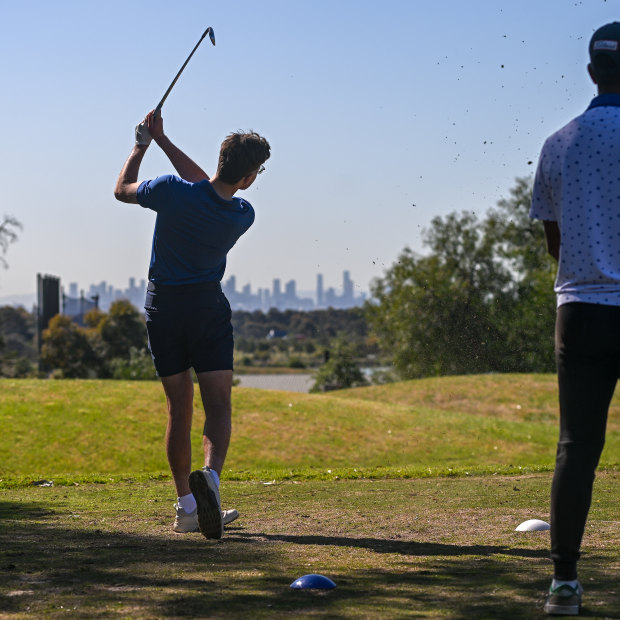
The Mt Derrimut Golf Club.Credit: Justin McManus
On a serene Monday morning at the Mt Derrimut Golf Club, the city skyline rises clearly against the horizon, with only the faint hum of nearby freeways breaking the quiet.
The car park is lined with utes, a clear sign that the club’s popular RDO golf competition is under way. The tournament has been tailored to align with the rostered days off for many local blue-collar workers.
Unlike other golf clubs in Melbourne, which often flaunt flashy cars and upscale attire, things are done differently in Derrimut.
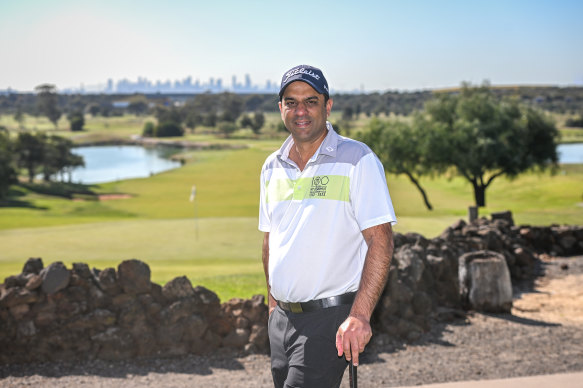
Mt Derrimut Golf Club vice president Chris Saldanha.Credit: Justin McManus
Vice president Chris Saldanha knows this better than most. His parents migrated from India in the 1970s, settling first in Essendon, and then in Sunshine.
When he moved out of home in 2008, he went to Derrimut – and has been there ever since.
In 2009, before he was 30, Saldanha was named club captain – a role he said is traditionally reserved for retirees. Saldanha said the club had actively worked on creating an inclusive environment in an elite sport that is usually dominated by wealthy, older professionals.
“We’ve got 700 members, we have competitions every day. We’re probably one of the most diverse and inclusive clubs in Melbourne,” he said.
“We have no barriers to membership or barriers to golf. Our membership base is very reflective of the demographic of the community as well.
“We have a men’s and women’s competition running in parallel. It’s one of those golf clubs that is very different to, I’ll say, the Melbourne sandbelt courses.”
When Saldanha first arrived, he bought a three-bedroom home for just $285,000. At that time, Derrimut was still developing and vacant land plots were being released.
Now in a different home, where he lives with his wife and two children, he says Derrimut is as good as any place in Melbourne to live.
“You don’t have to travel out of the suburb for a lot of things. It’s all there, and it’s good,” he said.
“If you see the suburb, we are locked by freeways and industrial areas, so the suburb can’t grow any bigger. You’re not fighting traffic every day.
“You can move in and out with easy access to the freeways and enough services, enough parks and things like that in the area. We feel comfortable, we feel safe, and have no plans to move.”

Derrimut Village is the suburb’s local shopping centre.Credit: Justin McManus
Derrimut, however, is often viewed as a place of have-nots.
Even its main claim to fame – the Derrimut Hotel – is actually next door in Sunshine, which for a short time in 1945 was home to Prince Philip before his marriage to Queen Elizabeth II.
It’s a small suburb, 17 kilometres west of the Melbourne CBD, in the Brimbank council area. It has no post office, high school or local Aussie rules football club. The Age was also unable to unearth any historical photos in its vast archive.
Derrimut is often overshadowed by its more famous neighbours in the west. While the vibrant streets of St Albans and the culinary offerings of Sunshine attract much attention, Derrimut offers a quieter allure.
Surrounding suburbs have undergone significant transformation. Nearby Sunshine is now regarded as the CBD of Melbourne’s west, while Truganina has rapidly become one of the country’s fastest-growing areas. In Footscray and Yarraville, gentrification has transformed working-class pockets into hubs of activity.
Yet for residents living in Derrimut, they’ve taken comfort in having their small, ordinary suburb remain as just that.
It remains relatively uncharted for many Melburnians, who mostly recognise it through the Derrimut 24:7 Gym that has garnered a reputation eclipsing the suburb itself. If you Google “Derrimut”, the gym franchise is the top result.
Of late, Derrimut’s reputation has largely been shaped by negative news: factory fires.
In July, toxic smoke filled the air in Melbourne’s west for several days following a chemical explosion that ignited a large factory fire in Derrimut.
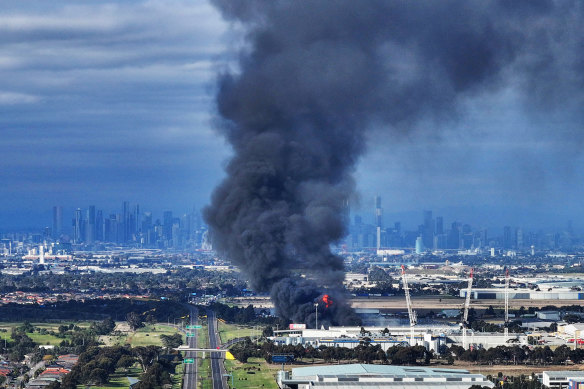
A fire at a chemical factory sent plumes of black smoke billowing across Melbourne’s western suburbs.Credit: Joe Armao
The blaze forced residents out of their homes as more than 180 firefighters worked to extinguish the flames on Swann Drive. A similar incident the year before at the same facility resulted in the death of a worker.
Local advocate Joh Bauch said he felt like a prisoner in his own home at the time.
“This is Brimbank, but in Brighton you wouldn’t have a toxic factory a kilometre away from mansions,” he said.
Bauch said the proximity of industrial sites to residential homes has largely gone by unnoticed, but the recent factory fire has sparked greater concern from the community.

Joh Bauch outside the Swann Drive factory in Derrimut, where the aftermath of the fire is still visible.Credit: Joe Armao
“I don’t think people even know what’s there to be honest, unless you work there,” he said. “You drive past every day, but you don’t really notice it, until something happens, and then you think, ‘Wow, this is dangerous,’” he said.
“It’s not fair for residents – we didn’t really sign up for that. It’s scary, to be honest. It’s like a ticking time bomb.”
Derrimut has always had two variations to the suburb: one of a residential area filled with young families and the other as an industrial playground.
But the state Labor representative, Kororoit MP Luba Grigorovitch, said having industry in the local area was a good sign. She said the separation of the industrial zone from residential homes was one that worked for the suburb.
“We need more jobs in our backyard,” said Grigorovitch, who describes herself as pro-industry.
“I don’t think that it’s a negative. I think, if anything, it’s a positive. And I know a lot of families who can literally ride their bike or walk across to get to work.”

Local MP Luba Grigorovitch planting a tree at the new Deer Park station after the level crossing on Mt Derrimut Road was removed, helping connect Derrimut to Deer Park.
Grigorovitch said that within her electorate – which stretches from Deer Park to Aintree – Derrimut was a true “hidden gem” of the west.
The suburb takes it’s named from Derrimut, a Boon Wurrung elder who died in 1864.
While the suburb is unassuming, the man was bold. Historian Gary Presland – author of the First Residents of Melbourne’s Western Region – said Derrimut was the head of Yalukit Willam clan at the time of European settlement.
“Derrimut has a particular history, and an interesting history, in that he formed a friendship with the European party that was led by John Pascoe Fawkner, one of the earliest settlers in the Melbourne area,” Presland said.
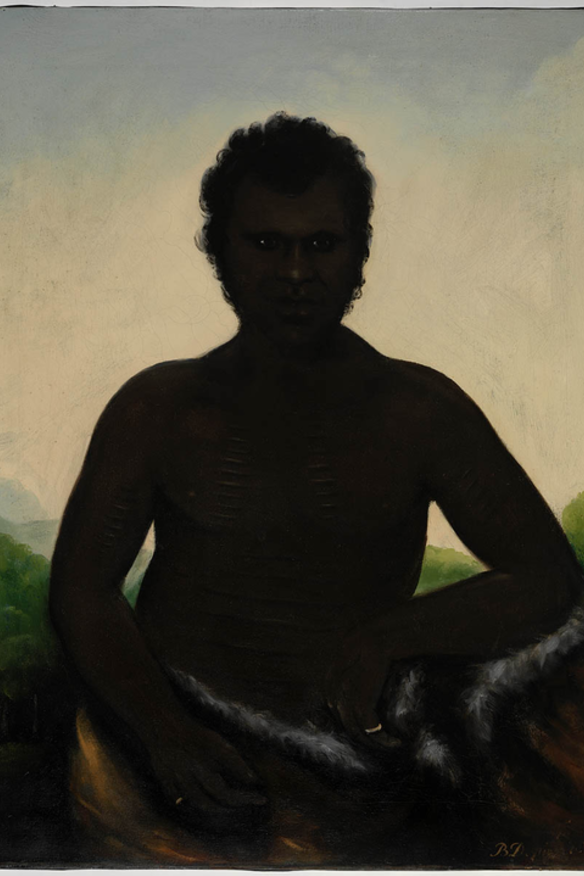
Portrait painting of Derrimut painted by Benjamin Duterrau in 1837.Credit: State Library of NSW
Derrimut played a crucial role in alerting the European settlers of an impending attack from another clan. Presland said Derrimut is credited in history as having provided the information on an upcoming attack to Fawkner’s party, allowing them to prepare and arm themselves, ultimately saving their lives.
“If they weren’t told, the Europeans would probably have been wiped out, and so there wouldn’t have been a Melbourne,” Presland said.
Derrimut’s history, like most, is contested. Some have labelled his warning to European settlers as traitorous, while others have lauded him as the saviour of Melbourne.
Presland said the decision to warn Fawkner’s party was probably not one that Derrimut would have made alone, but instead a position reached by his entire clan.
“I think it’s not entirely correct to give Derrimut all the credit,” he said.
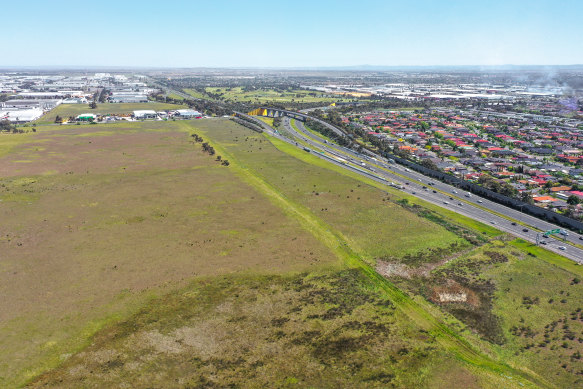
Grasslands, industrial zones and homes sit next to each other in Derrimut.Credit: Justin McManus
Regardless of his motivations, Presland said Derrimut had been honoured in a way that none of the other prominent clan heads were – with a burial site inside the Melbourne General Cemetery.
Derrimut’s headstone reads: “This stone was erected by a few colonists to commemorate the noble act of the native chief Derrimut who by timely information given October 1835 to the first colonists … saved them from massacre planned by some of the upcountry tribes of Aborigines.”
The modern-day suburb of Derrimut is home to a little more than 8000 residents.
According to the 2021 census, 16.2 per cent of the population had Vietnamese heritage. The statewide figure was just 1.9 per cent. There is also a strong Filipino community, accounting for 10.9 per cent of residents, compared with Victoria’s 1.5 per cent.
Mechanical technician Roel Estioco said living in Derrimut felt like being at home in the Philippines.
“We’ve got several friends here. We have nice restaurants as well here, Filipino and Vietnamese,” he said.
Estioco first arrived in Melbourne 20 years ago. He now lives across the street from a park that he describes as perfect for his five grandchildren.
In his 12 years of living in Derrimut, Estioco said, the only change he had noticed was the new warehouse and industry developments that continued to pop up.
Despite their growing presence, he said, the recent factory fire was not a concern for him.
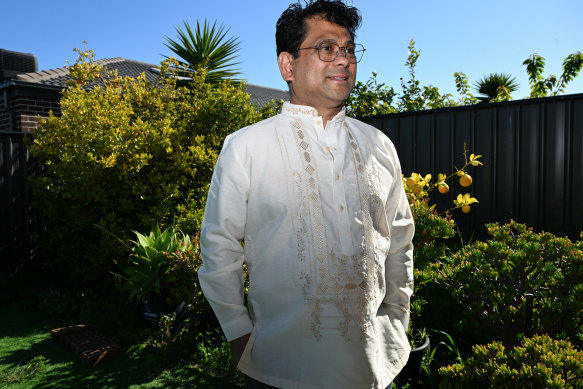
Roel Estioco at home in Derrimut, wearing traditional Filippino clothing. Credit: Joe Armao
“For me, it is what it is. An accident happened. You cannot just predict a fire like that,” he said.
“The suburb is near to the freeway, neighbours are good, and so far there’s no issue at all … I’m going to stay in Derrimut, this is my home. We are very comfortable living here.”
One resident who is helping shape the future of culturally and linguistically diverse people living in the western suburbs is Sisay Dinku.
Dinku is managing director of Multicultural Consulting Services, a social enterprise that helps connect people from migrant backgrounds with jobs.
Dinku, who is originally from Ethiopia, said his work was a labour of love.
“It is important, purposeful, and meaningful. Personally, when I first moved here I was struggling to find a job and to settle in,” he said.
“Many diverse communities are struggling … the job market is very challenging, and we’re trying to bridge that gap. The focus is on economic empowerment of the diverse community living in the area.”
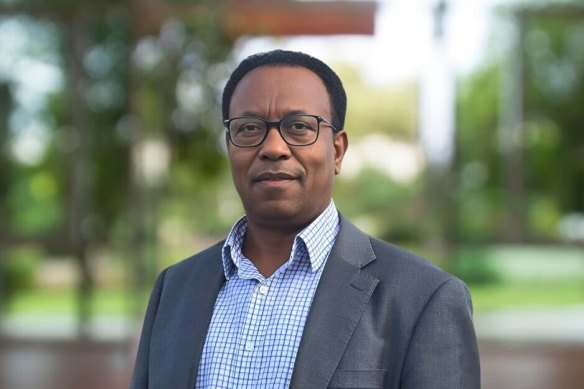
Derrimut resident Sisay Dinku has used his experience of struggling to find a job to help connect migrants with employment.
Dinku’s resume is more than impressive. In 2017, he was appointed as a commissioner of the Victorian Multicultural Commission for his long-time advocacy for migrant and multicultural communities in Victoria.
He moved to Derrimut in 2009, at a time when the only neighbours he had were empty blocks of land. He said that in the early days, people moved to Derrimut because it was affordable. Now people stay put for the suburban life and sense of community.
“Basically, it is like living in the CBD – everything is local,” Dinku said.
“We’re very happy, it’s accessible for all amenities including transportation.
“We also engage with local communities and decision makers and the leaders as well, and our voice is heard. We will continue to make it better as a community.”
Start the day with a summary of the day’s most important and interesting stories, analysis and insights. Sign up for our Morning Edition newsletter.